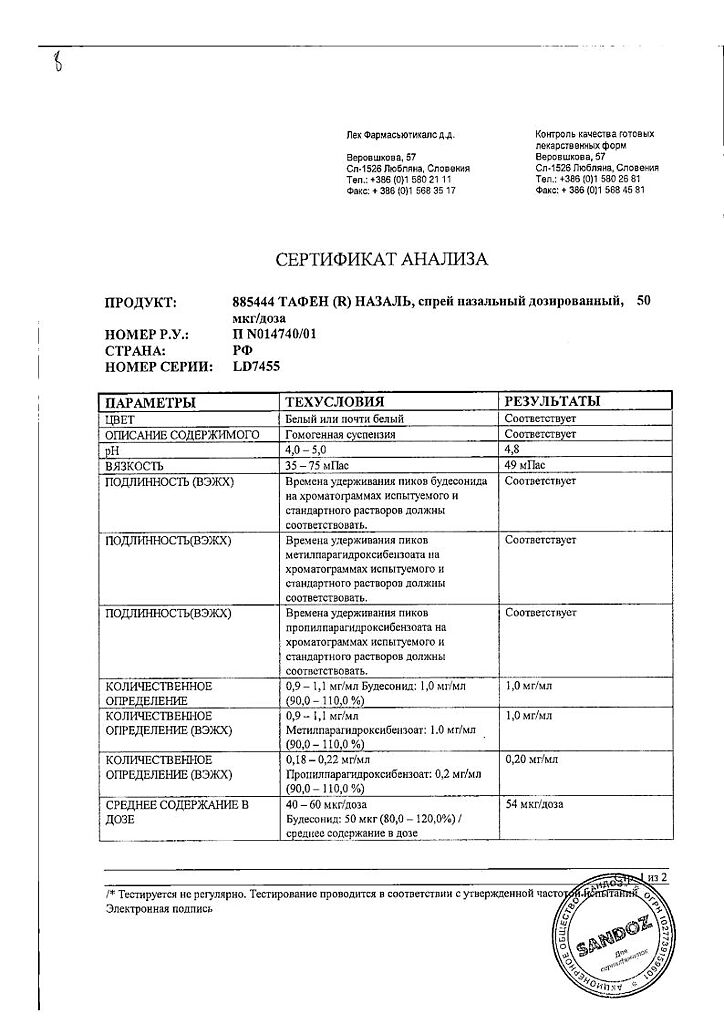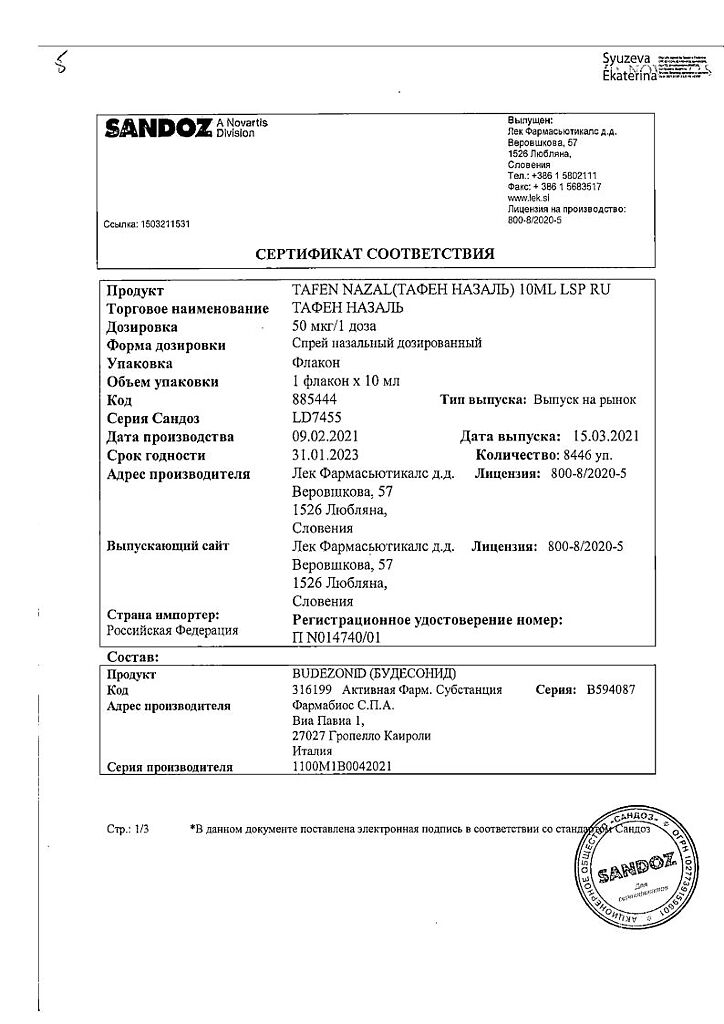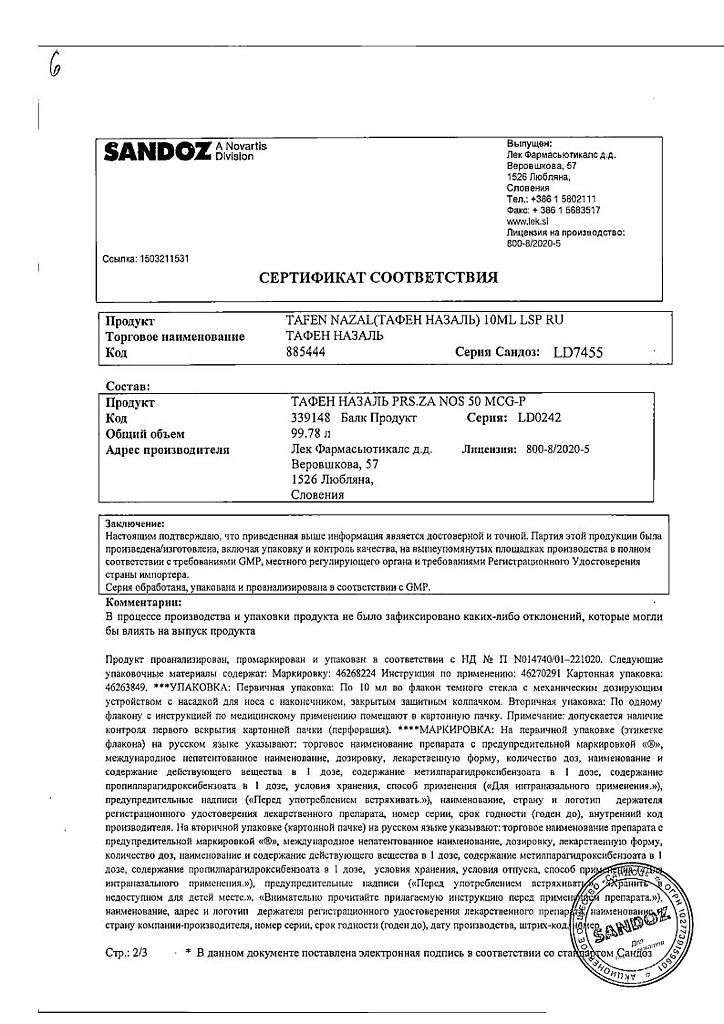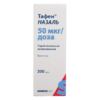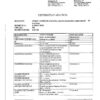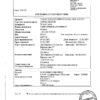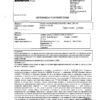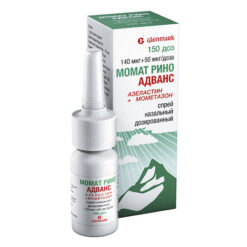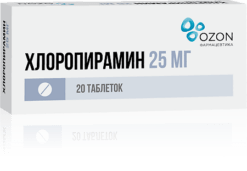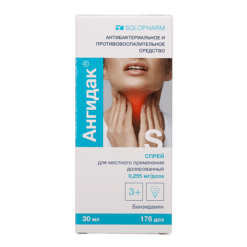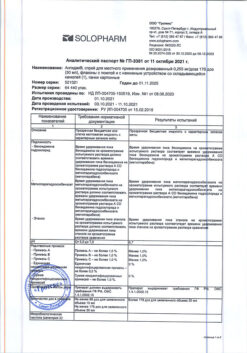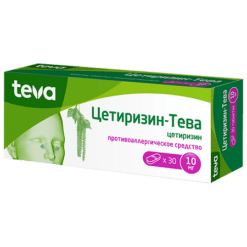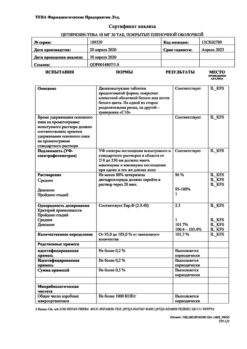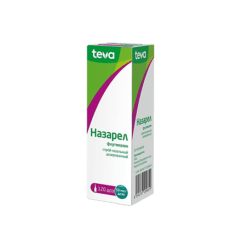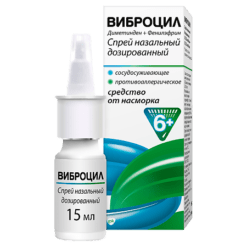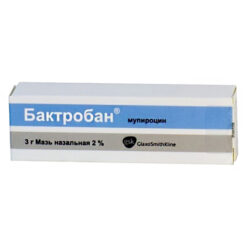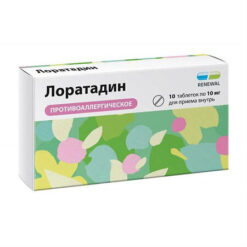No products in the cart.
Tafen, 50 mg/ml spray 10 ml
€9.48 €8.00
Out of stock
(E-mail when Stock is available)
Description
Pharmacodynamics
HKS for intranasal administration. It has a pronounced anti-inflammatory and anti-allergic effect. When used in therapeutic doses it has practically no resorptive effect. It has no mineralocorticoid activity and is well tolerated with long-term treatment.
The drug has an inhibitory effect on the release of mediators of the inflammatory reaction, increases the synthesis of anti-inflammatory proteins, reduces the number of mast cells and eosinophilic granulocytes.
Budesonide reduces the release of toxic proteins from eosinophils, free radicals from macrophages and lymphokines from lymphocytes. It also reduces the binding of adhesive molecules to endothelial cells, thus reducing the flow of leukocytes to the site of allergic inflammation.
Budesonide increases the number of β-adrenoreceptors of smooth muscle. The drug inhibits phospholipase 2A activity, which leads to inhibition of synthesis of prostaglandins, leukotrienes and PAF that induce inflammatory reaction.
Budesonide also inhibits histamine synthesis, which leads to a decrease in its levels in mast cells.
Tafen nasal reduces the severity of symptoms in allergic rhinitis, suppresses the late and early phases of the allergic reaction and reduces inflammation in the upper airways. Improvement of the condition is noted on 2-3 days after the start of treatment.
Pharmacokinetics
Absorption
. After inhalation of 400 µg budesonide C max in plasma is reached within 0.7 h and is 1 nmol/L. Only about 20% of the intranasally administered dose reaches the systemic bloodstream.
Distribution
The good distribution in tissues and binding to plasma proteins make V d 301 liters.
Metabolism
The systemic bioavailability of budesonide is low because more than 90% of the absorbed drug is inactivated by one-step metabolism in the liver. Glucocorticoid metabolite activity does not exceed 1%.
Elimation
The metabolites are excreted mainly with the urine (70%) and with the feces. T 1/2 is 2-3 h.
Indications
Indications
Active ingredient
Active ingredient
Composition
Composition
1 dose of nasal spray contains:
Active ingredients:
budesonide (budesonide) 50 µg.
Associates:
methylparahydroxybenzoate,
propylparahydroxybenzoate,
p> microcrystalline cellulose/sodium carboxymethylcellulose,
polysorbate 80,
simethicone emulsion,
propylene glycol,
saccharose,
p> dinatrium salt of EDTA,
hydrochloric acid,
purified water.
How to take, the dosage
How to take, the dosage
Adults and children over 6 years of age start therapy with 2 doses (50 mcg budesonide) in each nostril 2 times/day. The usual maintenance dose is 1 dose in each nostril 2 times/day or 2 doses in each nostril once/day, in the morning. The maintenance dose should be the lowest effective dose to relieve symptoms of rhinitis.
The maximum single dose is 200 mcg (100 mcg in each nostril) and the maximum daily dose is 400 mcg for up to 3 months.
The full therapeutic effect requires regular and appropriate use.
If a dose is missed, it should be taken as soon as possible, but at least 1 hour before the next regular dose.
Interaction
Interaction
Simultaneous use of Tafen Nasal with microsomal oxidation inducers (phenobarbital, phenytoin, rifampicin) may reduce the effectiveness of the former.
Methandrostenolone, estrogens, ketoconazole increase the effect of budesonide.
Special Instructions
Special Instructions
When switching from treatment with systemic GCS to treatment with nasal spray, due to the risk of adrenal insufficiency, caution is required while hypothalamic-pituitary-adrenal function is restored.
Because GCSs slow wound healing, caution should be used when prescribing Tafen nasal for patients who have recently had trauma or surgery to the nose.
The full therapeutic benefit of allergic rhinitis requires regular dosing.
The use is recommended to avoid contact with the eyes.
Impact on ability to drive vehicles and other mechanisms requiring increased concentration
Tafen nasal does not affect the ability to drive or operate machinery.
Contraindications
Contraindications
Side effects
Side effects
Respiratory system: irritation of the mucous membranes of the nose and throat, nasal bleeding, cough; dry nasal mucosa, sneezing are less common.
Dermatological reactions: dermatitis, urticaria, rash have been reported.
Others: fatigue, dizziness.
In exceptional cases, nasal corticosteroid use has reported nasal septal perforation, angioedema, loss of sense of smell, tachycardia, and growth retardation.
When using the drug, side effects are very rare and transient.
Overdose
Overdose
Accidental overdose of Tafen nasal does not cause any obvious symptoms. Acute overdose is unlikely.
Symptoms: Symptoms of hypercorticism may occur with prolonged use of high doses, as well as with concomitant use of other GCS.
Treatment: In this case, the drug should be discontinued and the dose gradually reduced.
Pregnancy use
Pregnancy use
The use of the drug Tafen nasal during pregnancy is allowed only if the expected benefits to the mother exceed the possible risk to the fetus.
Breast-feeding should be stopped if the drug has to be prescribed during lactation.
Similarities
Similarities
Additional information
| Shelf life | 2 years |
|---|---|
| Conditions of storage | At a temperature not exceeding 25 °C |
| Manufacturer | Lek d.d., Slovenia |
| Medication form | nasal spray |
| Brand | Lek d.d. |
Related products
Buy Tafen, 50 mg/ml spray 10 ml with delivery to USA, UK, Europe and over 120 other countries.


